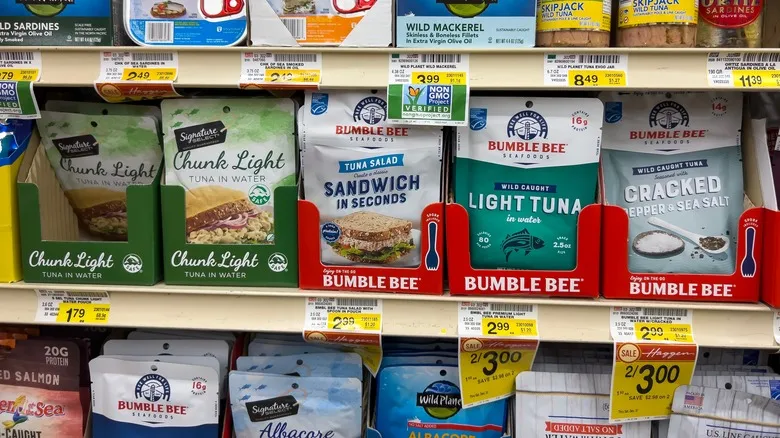Different tuna types for different tuna dishes

Water content, cost, shelf life, and convenience are key factors that differentiate canned tuna from pouch tuna. Both options are promoted as affordable, high-protein foods suitable for meals or snacks. However, pouch tuna is approximately twice the price of canned tuna per ounce. While it offers greater convenience for on-the-go snacking or light meals, it contains less fish per package. Canned tuna is more economical but requires a can opener and can be a bit messy to prepare.
Both canned and pouch tuna are pre-cooked and designed for long shelf life. However, pouch tuna is cooked for a shorter duration and has a shorter shelf life, typically lasting around three years, compared to the five years for canned tuna. Pouch tuna is vacuum sealed, which removes the need for water preservation, resulting in drier, flakier fish. Additionally, pouch tuna often comes pre-seasoned, while canned tuna usually needs extra ingredients to transform it into a flavorful dish.
Regarding added ingredients, pre-seasoned pouch varieties may contain added sugars or higher sodium levels. Tuna packed in oil tends to have a higher fat content than its water-packed version. With a wide range of options available, there is a type of tuna to suit everyone's taste and a perfect choice for any recipe.
Public opinion helped create the tuna pouch

Businesses are constantly searching for the next innovative product, but it was the public's perception of canned goods that partly motivated StarKist to launch its pouch packaging. The canning method has its origins in 19th century France and has long been a favored technique for preserving and packaging food. However, concerns about canned foods began to rise in the 20th century, particularly following reports of botulism outbreaks linked to these products. In her 2018 book, "Canned: The Rise and Fall of Consumer Confidence in the American Food Industry," Anna Zeide explores the negative public relations challenges faced by the canned food industry. One notable incident she discusses is the 1970 finding of elevated mercury levels in canned tuna by Dr. Bruce McDuffie at the State University of New York in Binghamton. McDuffie's widely reported results further damaged the reputation of canned foods.
Throughout the following decades, reports about the risks associated with canned foods continued to emerge in various media outlets, including the Los Angeles Times. By the year 2000, canned products like tuna were primarily viewed as emergency or budget-friendly options, yet they were still regarded as less healthy and less appealing compared to fresh alternatives. As consumer skepticism towards canned goods persisted, companies managed to keep tuna relevant by bypassing the can and introducing pouches in an expanding array of varieties and flavors.
Recommended

What's Best For Drying Your Herbs? The Oven, Microwave, Or Dehydrator?

The Storage Mistake That's Sabotaging Your Cast Iron Skillet

The Best Way To Store Corn On The Cob (And How Long It Lasts In The Fridge)

The Smartest Way To Freeze Butter (And Thaw It When You're Ready)
Next up

